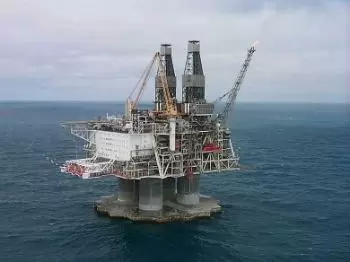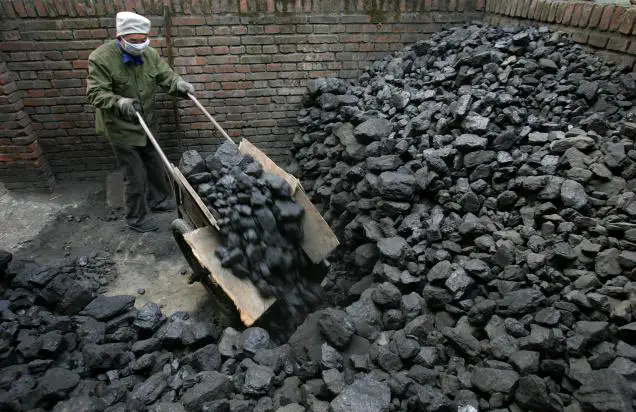
Fossil fuels have been the backbone of the industrial revolution and economic growth around the world for more than a century. Currently, fossil fuels are the most used source of energy in the world.
It is a non-renewable source of energy that comes from decomposed animals and plants. The main use of fossil fuels is to generate electricity. However, they are also used to generate mechanical energy (cars, heat engines, etc.).
What are fossil fuels?
Fossil fuels are energy resources formed from the fossilization of organic remains. They are made up of a variety of substances and gases generated over millions of years from the partial decomposition of animal and plant organisms. This process takes place in specific underground layers over long periods of time.
For the most part, these materials consist of hydrocarbons, molecules composed of carbon and hydrogen atoms. The transformation of the remains of animals and plants into coal, oil or natural gas depends on the physical-chemical processes to which they are subject.
Fossil fuels are considered primary energy sources as they can be extracted directly without the need for additional processes. In addition, they have a high calorific value, which makes them ideal for use in thermoelectric plants and in devices that operate through heat sources.
Impact on the environment
Despite their fundamental role in human development, fossil fuels have a significant impact on the environment, including:
1. Greenhouse gas emissions
Burning fossil fuels releases large amounts of carbon dioxide (CO₂) and other greenhouse gases into the atmosphere. These gases trap heat from the sun and contribute to global warming.
The resulting climate change has led to extreme weather events, such as droughts, floods and more intense storms.
2. Air pollution
The combustion of fossil fuels emits fine particles and air pollutants that affect air quality. This can lead to health problems, such as respiratory and cardiovascular diseases, and contribute to the formation of smog and the degradation of air quality in cities.
3. Oil spills
Oil extraction, transportation and processing carry risks of oil spills that can cause catastrophic damage to marine and coastal ecosystems.
Notorious examples include the Exxon Valdez spill in Alaska in 1989 and the Deepwater Horizon spill in the Gulf of Mexico in 2010.
4. Destruction of ecosystems
Coal mining and the extraction of oil and natural gas often result in the degradation and destruction of natural ecosystems, including forests, wetlands, and aquatic habitats.
This leads to the loss of biodiversity and the interruption of ecosystem services.
Types of fossil fuels
There are three types of fossil fuels:
1.- Petroleum (in liquid form or liquefied gas)
Petroleum is a mineral oil contained in large pockets in the upper strata of the Earth's crust. It has a liquid structure, but can also occur as a liquefied gas.
Oil undergoes a transformation process in a refinery. Once refined, it provides a large amount of products used as a source of energy. Among the petroleum products, gasoline, diesel, fuel oil, etc. stand out.
The sectors that benefit the most from oil are the automotive industry and thermal engines. They can also be used as raw materials in the petrochemical industry.
The energy efficiency of oil is approximately 25.7%.
2.- Carbon (solid)
Coal or coal is a black sedimentary rock, very rich in carbon and with variable amounts of other elements, mainly hydrogen, sulfur, oxygen and nitrogen.

Most of this non-renewable energy source was formed during the Carboniferous period (359 to 299 million years ago).
The energy efficiency of oil is approximately 26.8%.
3.- Natural gas
Natural gas is the cleanest fossil energy in terms of waste and atmospheric emissions.
The heating value of natural gas varies greatly depending on its composition. The highest values are between 8,500 and 10,200 kilocalories per cubic meter of gas.
It is the most efficient fuel for obtaining electricity in thermal power plants, with a total efficiency of 50.7%. If natural gas is used directly without transforming it into electricity, the efficiency rises to 91.2%.
Its storage is cheaper and easier than coal and petroleum products.
Origin of fossil fuels
Fossil fuels originate through a long transformation process that spans millions of years. This process results from the partial decomposition of organic matter and plant remains, under the influence of high pressures and temperatures exerted by multiple layers of sediments.
This fossilization process takes place in the absence of oxygen, which prevents decomposition by microorganisms and maintains the organic matter in the form of more complex organic molecules. These molecules can adopt different physical states:
-
Solid: In the case of coal.
-
Liquid: As occurs with oil.
-
Gaseous: As it occurs in natural gas.
The energy stored in these molecules is released when they are used as fuels, providing a valuable source of energy.
However, this formation process over millions of years means that fossil fuels are considered non-renewable resources. Its depletion occurs at a rate significantly faster than its regeneration capacity, which raises problems in terms of sustainability and the search for alternative energy sources.